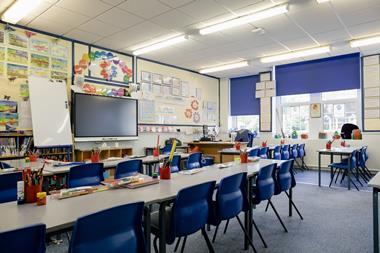Recently, we celebrated the second anniversary of the Associacao Portuguesa de Gestao de Riscos e Seguros (APOGERIS), the Portuguese association of risk managers. It all started with a rather restricted group of companies and risk managers, led by the Sonae Group, one of the largest Portuguese corporations and a worldwide leader in wood-based products. We got direct encouragement and support from the Federation of European Risk Management Associations (FERMA) and AGERS, the Spanish risk management association, and indirectly from the impact of the events of 9/11 and corporate scandals like Enron, which added impetus to the development of risk management in Portugal.
Portugal's economy is predominantly made up of small and medium sized enterprises, with some large industrial corporations. This explains why there has been less pressure to develop risk management. In fact, it is a new discipline in Portugal, and it is against this background that APOGERIS was created. Today, our association has nearly 40 members. The year 2005 will certainly be one of enormous development for APOGERIS, which is putting a lot of effort into organising the FERMA Forum 2005 that will be held in Lisbon in October.
Risk management today
In Portugal, insurance companies and brokers are the main players in the area of risk management. Because they cover corporate property risks and personal injury liabilities, they are aware of the need for it.
The insurance sector in Portugal is comparatively small, making up only around 7% of GDP. The overall turnover of the sector is (9bn, of which half consists of life insurance products. The market for property and casualty insurance is highly concentrated and is dominated by domestic players.
On the brokerage side, the market is much more fragmented, with almost 40,000 entities. The new mediation law, putting into effect the European Directive on Insurance Mediation, is expected to bring more discipline and professionalism to the sector.
Against this background, insurance has been, and will continue to be, the preferred instrument for risk transfer within enterprises, excluding the financial sector. In the majority of businesses, risk management focuses on protecting the asset base by using property insurance. For personal injury liabilities, there is compulsory insurance for workers' compensation, as in Belgium and Argentina, and for many years this was arguably the only risk management measure in use. Today, awareness about protecting workers' health and safety has increased, but the driving force is perhaps the adoption of European directives, rather than a deliberate programme by the insurance companies.
In large corporations, the evolution of risk management has been faster.
The supervisory body of the stock exchange has already made recommendations that listed companies should establish risk control mechanisms. Though this is not yet legally compulsory for every company, it shows we are influenced by international markets, in particular other European countries.
Developing trends
Captive reinsurance companies are being used more frequently in structuring risk and insurance programmes. Some examples of corporations that have developed reinsurance captives are Energias de Portugal, the electric utility company with a strong presence in the Spanish and Brazilian market; Galpenergia, present in Portugal and in Spain; the Sonae Group with a strong international operation in wood products, retail and shopping centres, and Cimpor, the major Portuguese cement company, with assets in several countries worldwide. The majority of these captives are domiciled in Luxembourg.
In companies of this size, the job of the risk manager is an established one, although levels of reporting, position within the hierarchy and scope of action vary. Some risk management functions are highly developed, and they clearly try to move beyond the scope of traditional technical and operational risk. At the other end is the risk manager who still just handles property risks. With some exceptions, the risk management function coincides with the insurance manager.
Catastrophe risk is another aspect which is gaining in importance, because Portugal has no institutionalised mechanism to deal with this extreme exposure. Here, APOGERIS is taking action by developing initiatives to establish such a mechanism.
On the corporate governance side, things are moving, and the links between risk and governance and management are increasing. Here again, we are following international trends, and soon will have the same level of compliance as across the rest of Europe. The Portuguese Institute for Corporate Governance has been created, one of its founder members being Antonio Borges, vice-chairman of Goldman Sachs International and chairman of European Corporate Governance Institute (ECGI). Borges will be one of our keynote speakers at the FERMA Forum in October.
APOGERIS is far from realising the full potential of what we intend and can do. At the moment, all our initiatives are joint ventures with other organisations, so we can reach the greatest number of people possible.
For example, we have organised projects with the loss adjusters association, the CNPR, which is the Portuguese representative at FUEDI, and IPAI, the Portuguese institute of internal auditors.
- Jose Manuel Dias da Fonseca is the president of APOGERIS and chairman of the FERMA Forum 2005 organising committee,



















